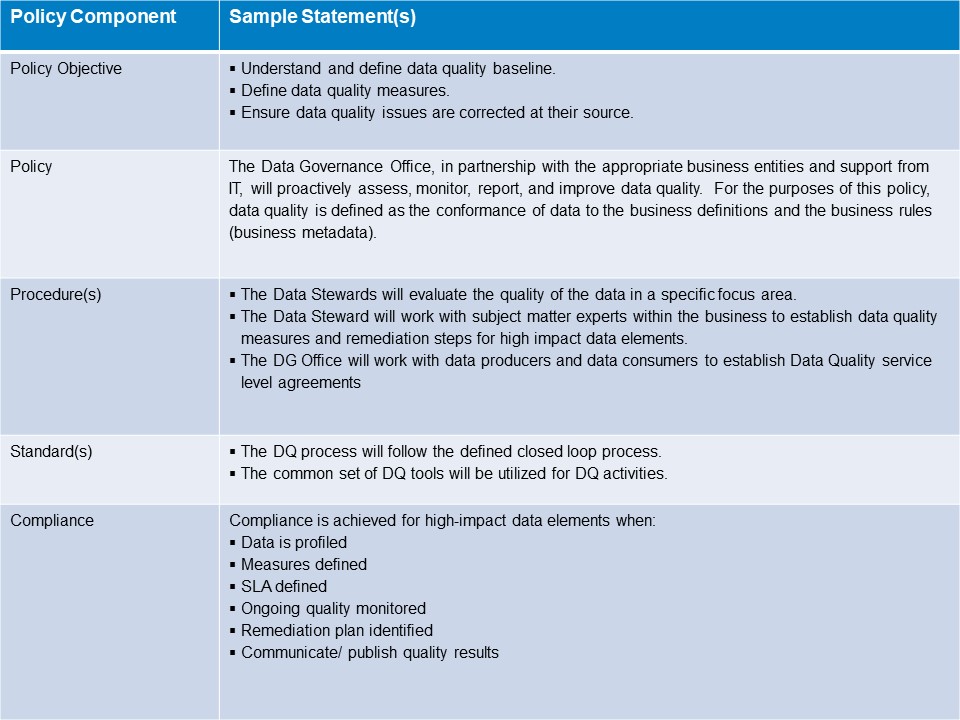A recent MIT Sloan Management Review report, Analytics as a Source of Business Innovation, pointed to data governance as a key enabler for innovation with analytics. The report noted that companies with strong governance programs usually see an expansion of innovation and that data governance capabilities (especially around data sharing and data security) form the foundation for these innovation processes. The report said:
Companies that share data internally get more value from their analytics. And the companies that are the most innovative with analytics are more likely to share data beyond their company boundaries. Survey results show that strong data governance practices enable data sharing, which then enables innovation. To be most effective, data governance needs to be embedded in an organization’s culture.
Effective data governance programs are supported by comprehensive data governance policies. A data governance policy formally outlines how a business activity monitors the data to protect it and to ensure accuracy, accessibility and consistency. The policy needs to address the governing bodies that are responsible for the data – starting, for example, with the chief data officer. And it should specify procedures for managing this data. But data governance policies are not a one-and-done deal. Policies will evolve and change as the organization's data needs change.
Data governance policies can be broad or granular in nature, depending on the organization's culture and data governance program objectives. Consider some example policy statements.
- A broad example: The data governance office, in partnership with appropriate business entities and support from IT, will proactively assess, monitor, report and improve data quality. For the purposes of this policy, data quality is defined as the conformance of data to business delimitation and business rules.
- A granular example: The company will use a standard product-focused hierarchy to be called the “enterprise product hierarchy.” Other user classifications or views may be used for specific business needs. Hierarchy structure will be sources from a common location.
The data governance policy should contain the following elements:
- Policy name and effective date.
- Author(s).
- Scope/affected audience.
- Purpose and objective.
- Procedures and standards.
- Policy details.
- Ownership details, roles and responsibilities.
- Compliance.
- Maintenance and review.
The following chart shows some of the components that comprise a data governance policy.
My experience shows that comprehensive data governance policies supported by a solid data governance program can spark innovation and help you capture the illusive creature called "trusted data." Data governance policies provide a documented, tested methodology and process for addressing the data needs of the organization. They outline what data the business user needs, as well as where it's needed, when, and in what condition.
With access to trusted data, business users are more inclined to use that information to make decisions – and to do it more often, in more creative ways. The bottom line: Strong data governance policies support analytics innovation that can take your organization to a new level of success.
Download a free white paper: The SAS Data Governance Framework






